The human hand is extremely delicate. A complicated interplay of tendons, muscles and joints ensures their mobility. A Dislocated finger, medical: Finger dislocation, is painful and leads to undesirable restrictions on movement.
What is a finger dislocation?

© AlienCat - stock.adobe.com
An injury to one or more finger joints is called a finger dislocation or dislocation. This leads to an opposite displacement of the joint surfaces. The unnatural position of the finger joint and finger can also be seen externally.
If the joint surfaces have not completely shifted from one another, the dislocation of the fingers is referred to as subluxation or incomplete finger dislocation. While the thumb only has two phalanges, each with a connecting joint, the remaining four fingers have three phalanges each.
Between them are the base joint, the middle joint and the terminal joint of each finger. A finger dislocation can generally occur in all joints of the fingers.
causes
Finger dislocations are caused by applying force to the corresponding finger joint. Overstretching the finger too far or a combination of overstretching with simultaneous compression of the joint triggers a finger dislocation.
It is therefore very common in sports. Above all, people who play ball sports such as volleyball and basketball but also handball are at risk. Accepting the ball with outstretched fingers leads to injury to the joint due to the force of the ball.
The dislocation of the fingers often leads to further injuries to the joint. This can lead to tears in the joint capsule and / or the ligaments as well as joint fractures.
Symptoms, ailments & signs
When a finger is dislocated, those affected primarily suffer from very severe pain. These occur in the finger and can also spread to the neighboring areas, so that severe pain can also occur in the entire hand or even on the arm. Due to the constant pain, the patients suffer from restricted mobility and therefore from restrictions in everyday life.
Likewise, the affected person may no longer be able to carry out his activity due to the dislocated finger. There are also swellings or disorders of sensitivity and even paralysis. In some cases, patients experience nighttime pain from dislocated fingers. These often lead to sleep problems and thus to irritability and various psychological complaints or to depression.
A finger dislocation can also be associated with a torn ligament, which honestly reduces the stability of the fingers. As a rule, a minor surgical intervention is necessary. If the finger dislocation is treated early, no particular complications arise and the disease progresses positively. If there is no treatment of the finger dislocation, inflammation can occur, which can permanently damage the finger. The life expectancy of the patient is not negatively affected by the disease.
Diagnosis & course
A finger dislocation is an extremely painful injury and therefore leads the patient to the doctor. As a result of the misalignment, there is immediate massive restriction of movement and swelling of the affected finger.
If nerves are damaged in addition to the joint, the disruption of the sensation can lead to an unpleasant tingling sensation. The dislocation of the finger is immediately recognizable as such from the outside due to the misalignment of the finger. In order to rule out additional fractures and to confirm the diagnosis, two x-rays are taken.
A torn ligament can be detected by the doctor by checking the lateral stability of the finger. Further injuries to the joint capsule as well as the tendons and ligaments can only be safely ruled out with a finger dislocation by means of an MRI (magnetic resonance tomography).
Complications
A dislocated finger can cause a number of complications. Initially, the overstretching leads to pain in the fingers and restricted mobility. In the course of finger dislocation, the fingers can swell and cause circulatory disorders and sensory disorders.
If nerves are damaged in addition to the joint, an unpleasant tingling sensation can occur, which usually persists until the injured hand is treated. If there is also a torn ligament, avoidance postures can result and the affected fingers can be misaligned. Serious complications are rare with a harmless dislocation.
However, allergic reactions to the prescribed medication can occur during treatment. Surgery carries some risk of further nerve and muscle injuries. Often times there is also permanent immobility of the finger joints.
Depending on the type and severity of the dislocation, ten to fifteen degrees of loss of movement are common. The restricted freedom of movement increases the risk of accidents in everyday life and can have a long-term negative effect on the mental state. Generally, however, severe complications are extremely rare as a result of a finger dislocation.
When should you go to the doctor?
A finger dislocation is a reason to consult a doctor due to the clearly noticeable pain. In addition, a dislocated finger is clearly visible due to the significant misalignment. It is also useful to see a doctor because a dislocated finger can lead to a number of complications. For example, ligaments, tendons and nerves can be damaged, which can lead to a loss of function of the finger if the irritation persists.
Most finger dislocations are to be regarded as harmless and are corrected by a suitably trained family doctor or a specialist. This can be painful and requires an anesthetic. A subsequent splint ensures good healing.In addition, the relevant area must be x-rayed in order to determine or exclude possible accompanying damage (joint capsule tears, broken fingers, etc.).
More complicated dislocations, in which the surrounding tissue or the joint itself has been affected, may require surgical intervention. Clarifying the severity of the dislocation has top priority. Otherwise permanent damage in connection with pain is possible.
In case of doubt, admission to a hospital can be the goal. In order to clarify a suitable treatment, the extent of the damage is determined and often first aid is provided to relieve pain. The person concerned or a third party should refrain from restoring the finger in an amateur way.
Doctors & therapists in your area
Treatment & Therapy
Immediately after the finger dislocation occurs, the affected finger should not be moved and should be held upwards if possible in order to keep the swelling as low as possible. It is advisable to remove the rings immediately and to cool the finger as far as possible.
After ruling out fractures and injuries to nerves, tendons or ligaments, the doctor tries to correct the finger joint. This procedure is painful and is therefore usually done under local anesthesia. An X-ray is then taken to check the joint. The injury around the capsular ligament must now heal and is provided with a tape bandage or a splint and thereby immobilized. The healing process of a finger dislocation can take two to six weeks.
If the attempt to straighten the finger joint does not bring the desired result or if a joint fracture has occurred, an operation of the finger dislocation is usually unavoidable. This also applies if the joint capsule has been injured or if there is a torn ligament. In the case of a simple finger dislocation, there is no longer any restriction of movement after the injury has healed.
However, if the injury to the finger joint is more complex, mobility may be limited in the long term. Targeted finger exercises, which may be learned under the guidance of an occupational therapist, can quickly improve mobility after a finger dislocation.
Outlook & forecast
People with a finger dislocation have a good prognosis. From a medical point of view, the existing sprain is a harmless injury. The injured region is usually healed within a few weeks or months. Free of symptoms and a complete fist can be expected after about three months.
For an optimal healing process, the affected person should take care of the injured hand and allow sufficient rest. Exertion of force on the hands and fingers should be avoided. Sports activities and in particular ball sports such as basketball or volleyball are also to be avoided during the regeneration phase. In everyday life, processes such as brushing teeth, writing or all grasping processes should be carried out temporarily by the healthy hand. As soon as the person concerned perceives an increase in the symptoms, a break should be taken and the injured hand should be spared more.
If the doctor's instructions are followed, the impairments will quickly improve and subside. Targeted training units and training adapted to the circumstances help to build up the muscles in the hands. Avoid overloading.
After the healing process is complete, the fingers and hands can gradually regain their full load capacity. In the case of a finger dislocation, with optimal healing, neither sequelae nor long-term impairments are to be expected.
prevention
The risk of a finger dislocation in sport can be significantly reduced by bandaging the fingers at particularly high risk. It is also important to reduce the force exerted by the ball on the joints by bending your fingers slightly. Strong hand and finger muscles support the joints, but can only marginally minimize the occurrence of finger dislocations, especially in sports.
Aftercare
Dislocation of the fingers does not usually require any special follow-up care. However, such a dislocation can occur in different degrees of severity, so that under certain circumstances follow-up care must take place. As a rule, such a dislocation occurs due to a sudden or unusual overload of the fingers, so that the muscles are overstretched.
Entire hand immobilization is required for a quick and complete recovery. However, if there is no significant improvement after a few days, a doctor should be consulted immediately. A finger dislocation can be effectively counteracted by means of a splint. Subsequent visits to the doctor are essential in such a case and should be strictly observed.
Otherwise it can lead to considerable complications, which in the worst case even have to be treated surgically. The result: permanent and chronic pain that can impair the entire hand. Dislocations of the fingers should also be examined and observed by a doctor afterwards. In this way, possible complications can be recognized early enough and treated accordingly. Those who attend these follow-up examinations can count on a quick and smooth healing. The finger should be fully resilient again after three to four weeks.
You can do that yourself
If your fingers are dislocated, it is important to take care of your fingers and your hand immediately. Loads from lifting, grasping or carrying objects must be completely avoided. Sports activities or activities such as writing should also be restricted.
The fingers should be adequately cooled with cold water, nourishing ointments or home remedies such as compresses with arnica or aloe vera. If possible, the affected region should be kept still. The less movement of the arm and hands, the better the possibility of a quick cure and the spread of the symptoms is avoided.
As a dislocation often causes swelling of the fingers or parts of the hand, only a loose bandage or no bandage at all should be used without consulting a doctor. This will avoid a feeling of tightness in the injured area. The fingers should be checked for misalignment of the bones or open wounds.
If the dislocation has damaged the bones or joints in the fingers, a doctor must be consulted. There is too great a risk of permanent damage occurring. In the case of open wounds, these must be carefully cleaned and kept sterile so that no germs or pests can enter the organism.

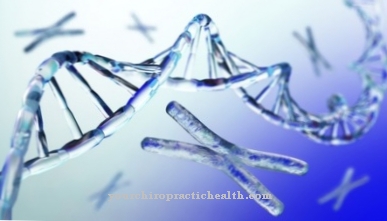
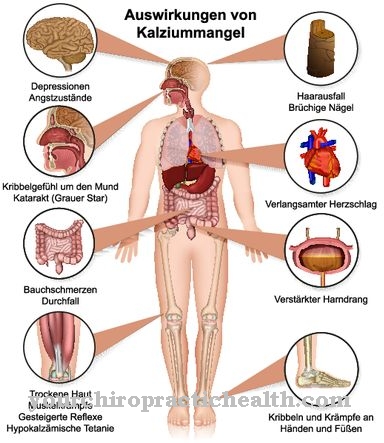
.jpg)
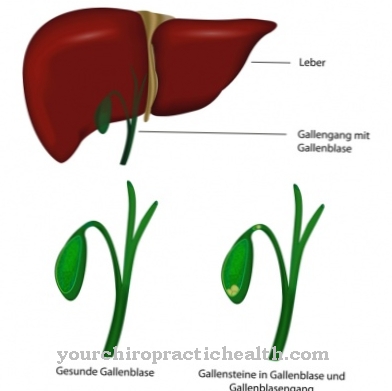
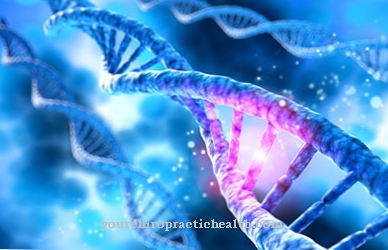
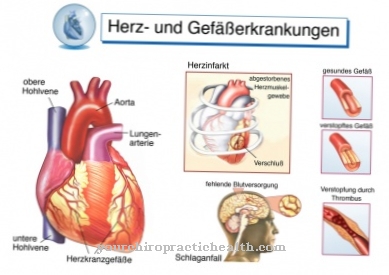









.jpg)
.jpg)



.jpg)






